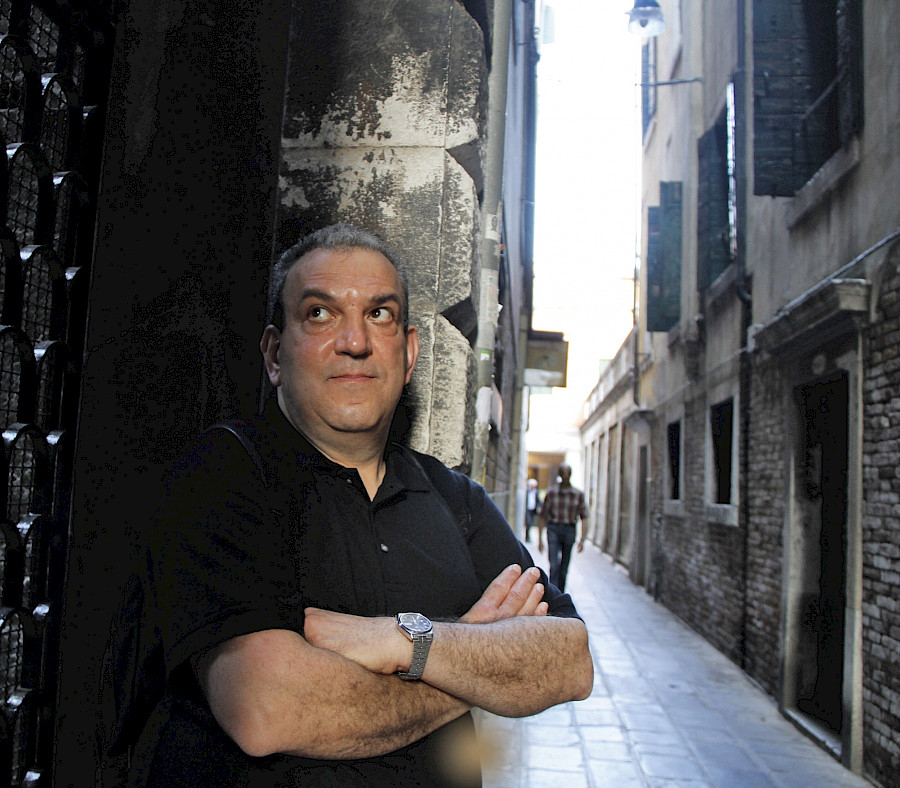
Many years ago, he joined the New York art community to bring his "big apple" vision to contemporary art. Today Agha Huseynov is a popular author, a bearer of innovative ideas, his sculptures and installations decorate famous galleries. No, we are not sitting on a low sofa and drinking tea. I am not wandering around his studio, inhaling the aromas of paints and trying not to touch the plaster blanks. Everything happens in a modern format: questions by email, pictures on the monitor screen, a flashing messenger icon... But all this does not make our conversation less meaningful. We are talking about Baku and New York, about the American dream and nostalgia, the art market and the current situation of contemporary art...
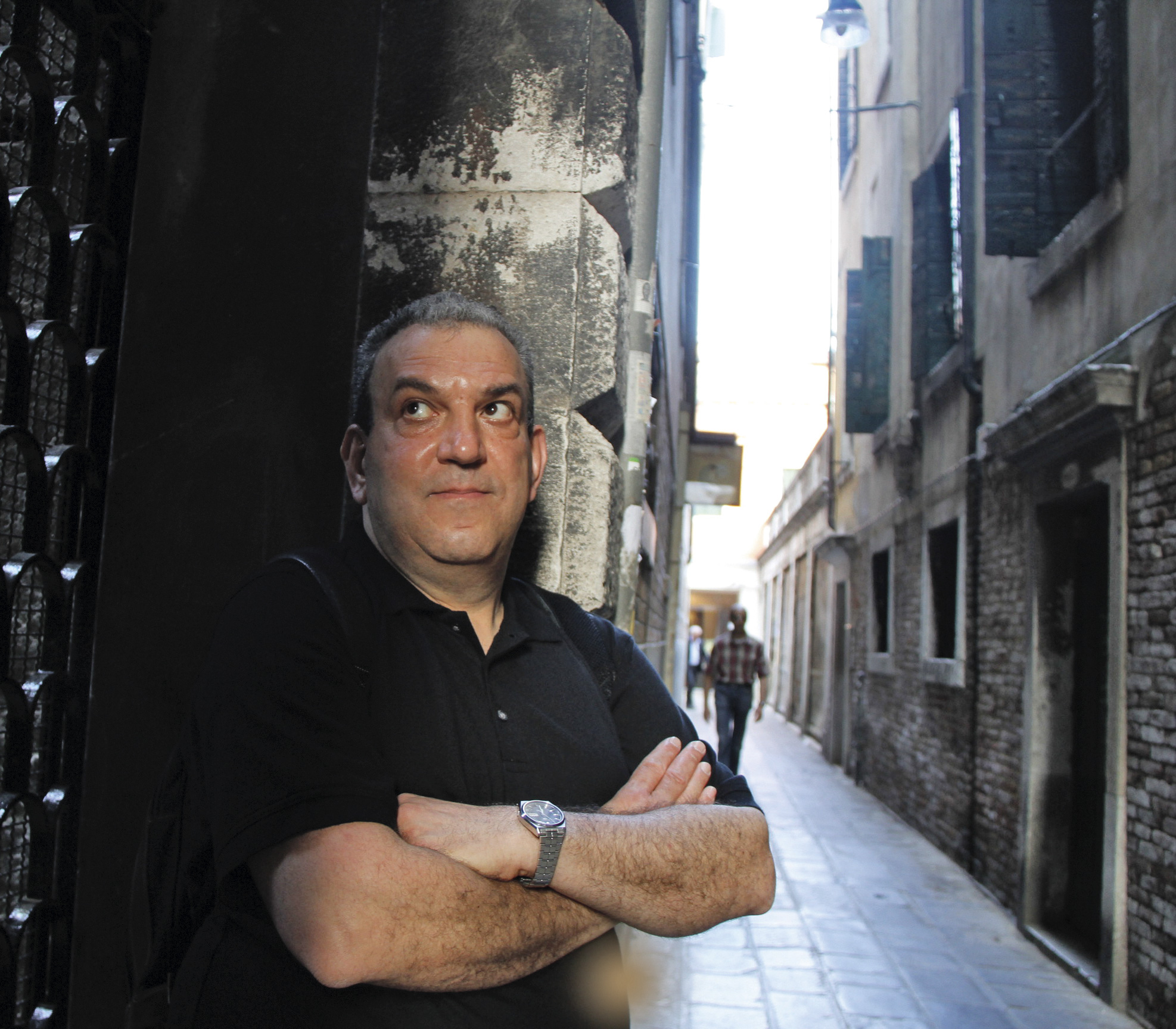
Before settling in New York, you had seen many cities and countries. Why was NYC chosen as the place of residence?
At the age of 14, I was deeply impressed by the novel "The Catcher in the Rye." Having described the adventures of a poor high school student in his characteristic lively, figurative language, expelled from the prestigious school, J.D. Salinger created an accurate, not idealized portrait of the city. Later I watched a Woody Allen movie, “Annie Hall”. And in general, the atmosphere of New York that I saw turned out to be the same as it was described by these two such different masters. To this you can add the album of the amazing photographer Saul Leiter, given to me by my parents in Moscow for completing the first year of the Surikov Institute (Leiter’s favourite plot was shooting the city in snow and rain), as well as my father`s watercolors from his studies at the VGIK (All-Russian State University of Cinematography) art faculty – it seems to be a storyboard for a term paper based on the story of an American writer. I remember New Yorker magazine for 1968 on a shelf in my father’s workshop, with a charming New York look on the cover. And another, very important point was the history of the construction of the Guggenheim Museum, which was told in detail to me by my mother, a wonderful architectural historian. New York, in my view, compiled from this "mosaic" of knowledge, is very different from the dark image created by Soviet propaganda... And so it happened that in 1991 I was invited to New York with an exhibition. The city appeared to be a complex, but full of light and energy, a place with beautiful, yet strong architecture, wonderful museums, parks and squares. Its inhabitants live in fierce competition but have an excellent sense of humour.
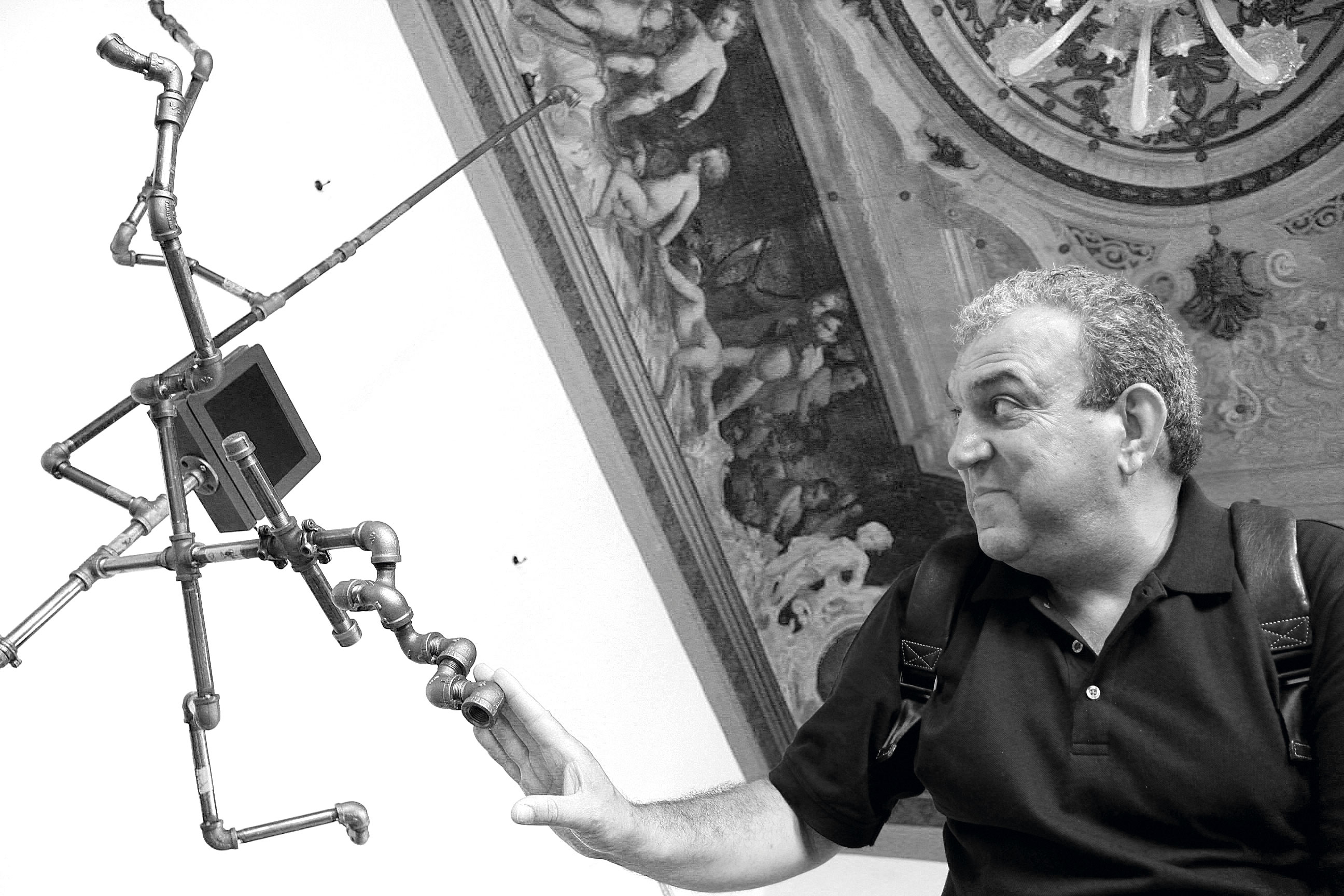
Was it hard for you to have high hopes in this city? Did you feel like leaving everything behind and returning to your homeland which is very familiar?
Of course, I really missed my parents, my father’s workshop in the House of Artists, our sea, the Governor’s Garden, where I spent my childhood, the Creative House in Latvian Dzintari, where I spent a lot of time, the Surikov Institute and the Pushkin Museum in Moscow. .. This was the era before Skype and other current wonders of communication. It used to take several hours to get through to Baku. But I already had had the experience of changing the environment, because at the age of 18 I went to study in Moscow. And once again I found myself in a completely different world, though, now far away...Now I recall that somehow there was no time to get bored: I had to work, improve my language (read, listen to the radio), somehow start exhibiting, and for this I went to exhibitions, communicate, etc. I worked in a design studio, with a Japanese master of manufacturing giant kites, he did the scenery in the theatre, studied at the ICP, was an assistant to a wonderful Swiss artist. And after four and a half years, having received the so-called Einstein visa and again gaining the ability to cross borders, I flew to Baku, to the arms of my parents. And the very next morning, as in the good old days, I was drinking sweet tea with miracle cakes, enjoying the view of the sea from our windows, and it seemed that everything was as before.
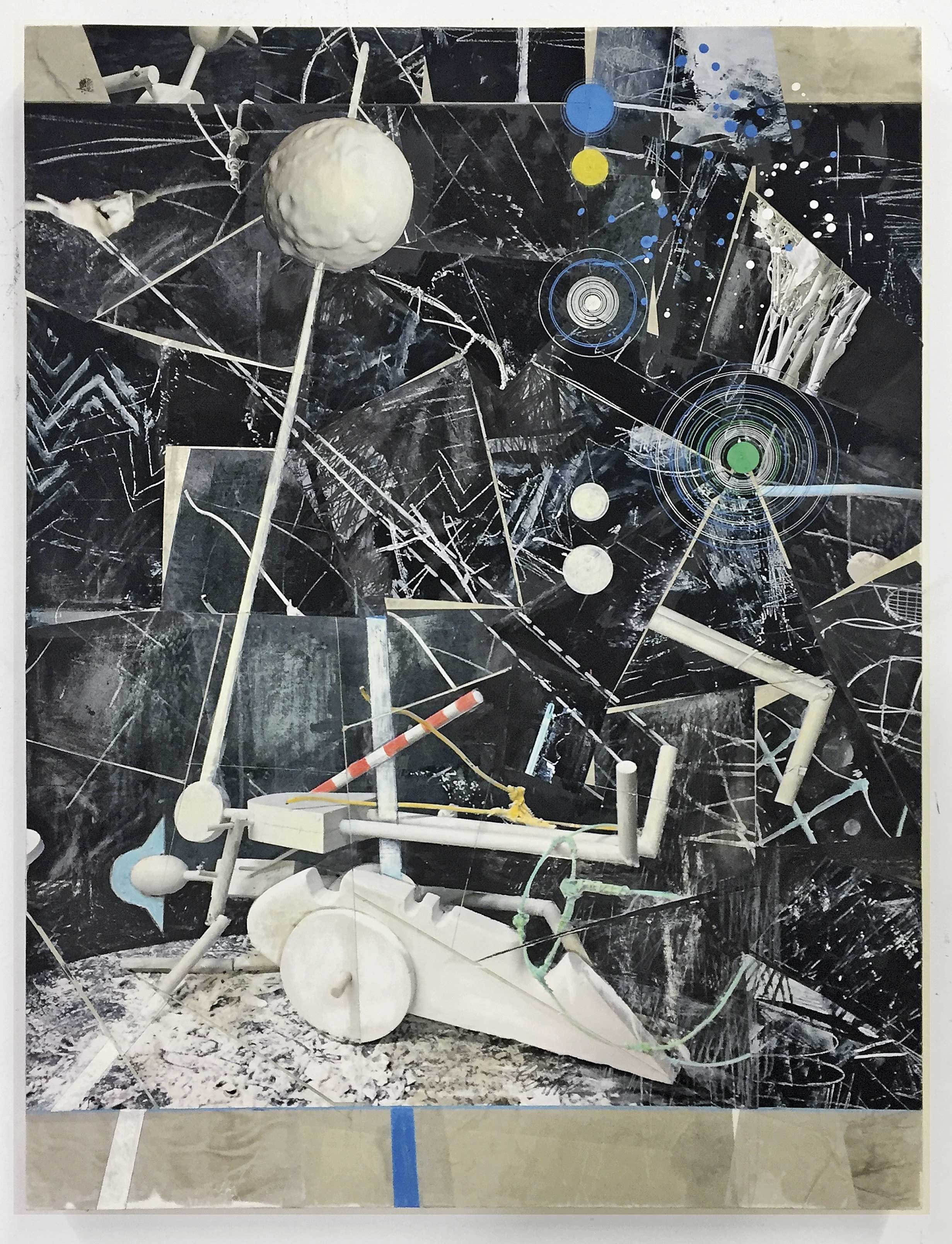
We are proud of the cooperation of our compatriot with such a giant in the fashion world as Hermes. What did this collaboration give you and how many projects have you completed working with Hermes?
My work with Hermes is divided into two areas: the Artists in the Windows program, which has existed since the 1950s, and design projects. Since 2004, I have done six projects in the main building of Hermes (flagship store / US) on Madison Avenue and East 62nd Street. Among them are Inventions (2006–07), Alternative Methods of Flying (2009–10), The Naturalist, 2016 (in two versions). Design projects are Winter Tale and Trees and Birds. Besides, there were projects in Miami and Chicago, in the Hermes building on Wall Street. Several of my developments at different times were used in installations in other cities in the USA and Italy. Some of these projects were created jointly with my wife Irina, a photographer and photo collage master. And in 2016, I put together one of the versions of The Naturalist installation in Beverly Hills, California. This newly renovated building on Rodeo Drive has excellent windows, and in the same space, on the ground floor, a platform for art installations was created. In the same year, I put out the Pigeon Post-installation – a three-dimensional implementation based on my essay of the same name, published in the collection Art, Poetry and the Pathos of Communication. Projects with Hermes allow me to realize my passion for installation art: I try to construct my territory and populate it with artefacts, combining my interest in sculpture, collage, photography and cinema, in utopian architecture and scientific and technical inventions.
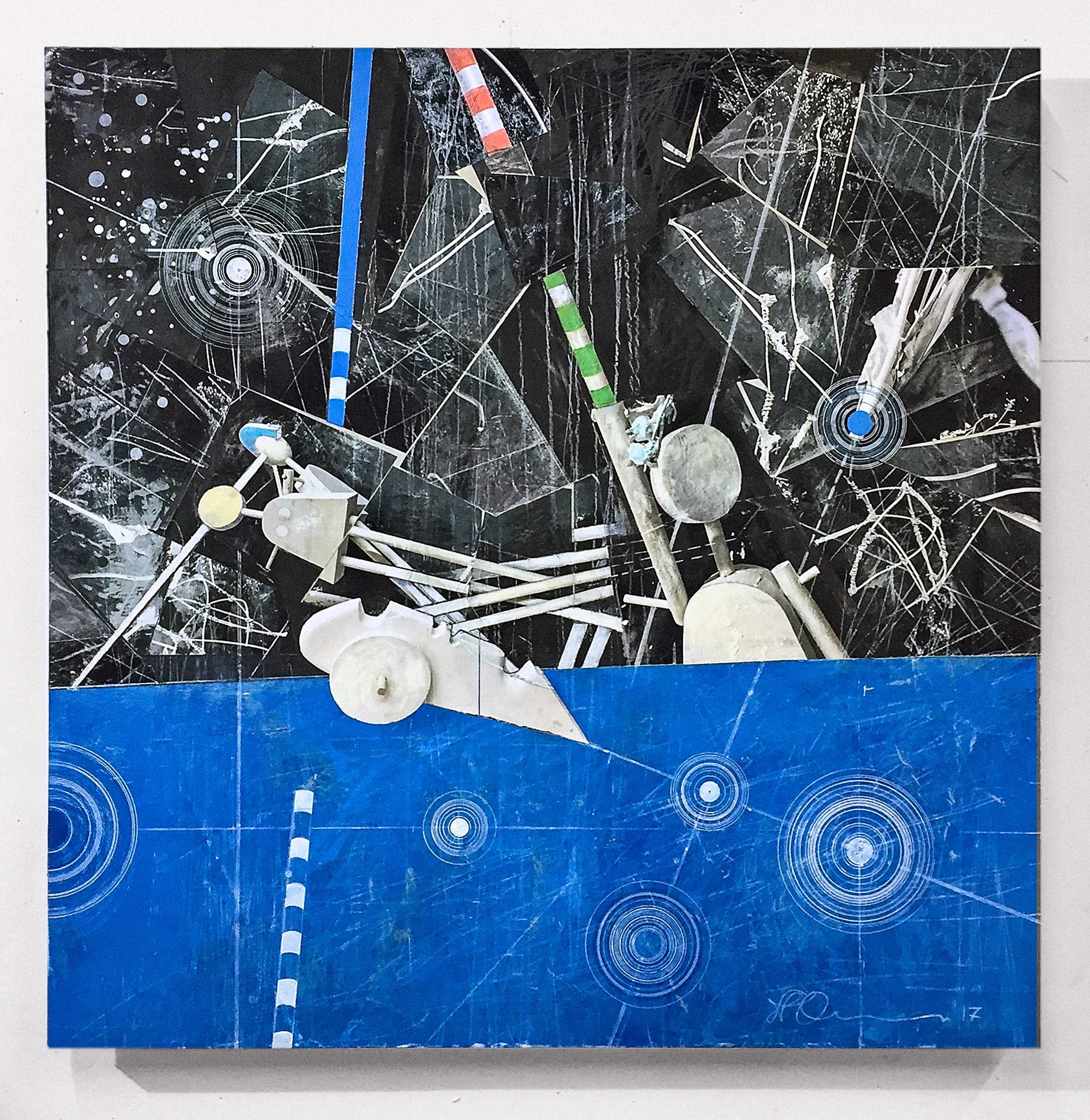
How would you briefly describe the art of the 21st century?
I would call it "well-controlled chaos." Thank God that it is controlled: it is not always possible to influence events in today's ambiguous and strange world! But you can try, as it was in history more than once, and prepare for the "restoration", return to the next era of enlightenment. It is sad to see that the world of art unconsciously behaves as a secondary entertainment industry. The phenomenon of commercial success of fine art played a huge role in the emergence and development of very good artists and curators, but it also attracted many mediocre and incompetent people among artists and art functionaries. The popular term Post Truth is very relevant in the world of contemporary art.
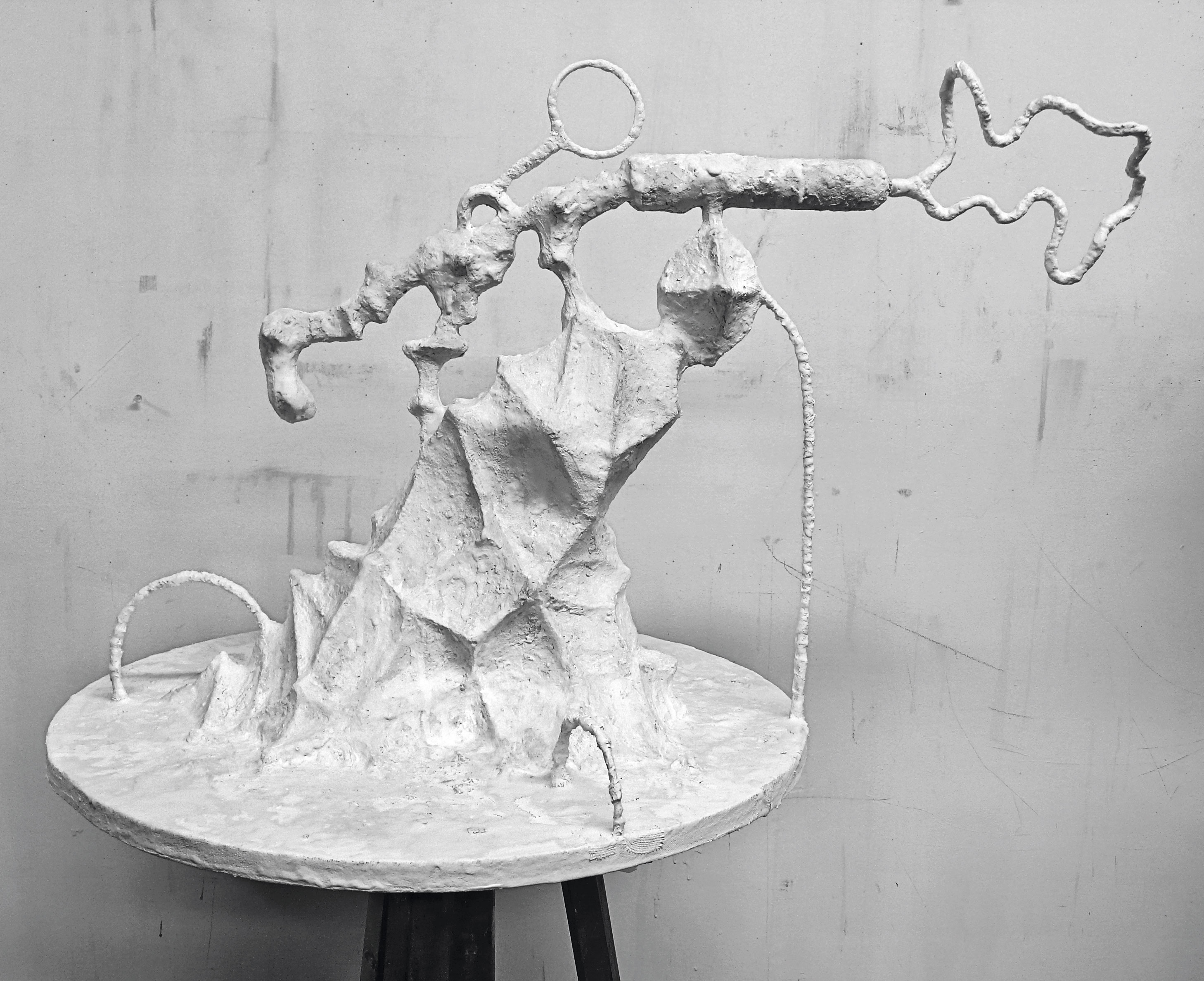
Is it difficult for an artist to find his niche and bring something of his own into today's art, which by and large resembles an endless repetition of citation from the past?
Hard, probably, but necessary. We live in a chaos of visual information online. And the art of the past, which seems quite modern to today's consciousness, can be returned again and again. In our memory, it becomes a repository, which contains a variety of tools that form our current imagination. A contemporary artist, being able to filter this stream of information and, naturally, possessing talent, definitely has a chance to find his own, unique way. Otherwise, there is a repetition of quotes from the past, and moreover, from the most recent, the last 20-25 years. But we must bear in mind that in our days the general interest in art is incredibly high, and the viewer has become much more educated, again thanks to the availability of information on the network. And to recognize borrowing from other artists has become much easier.
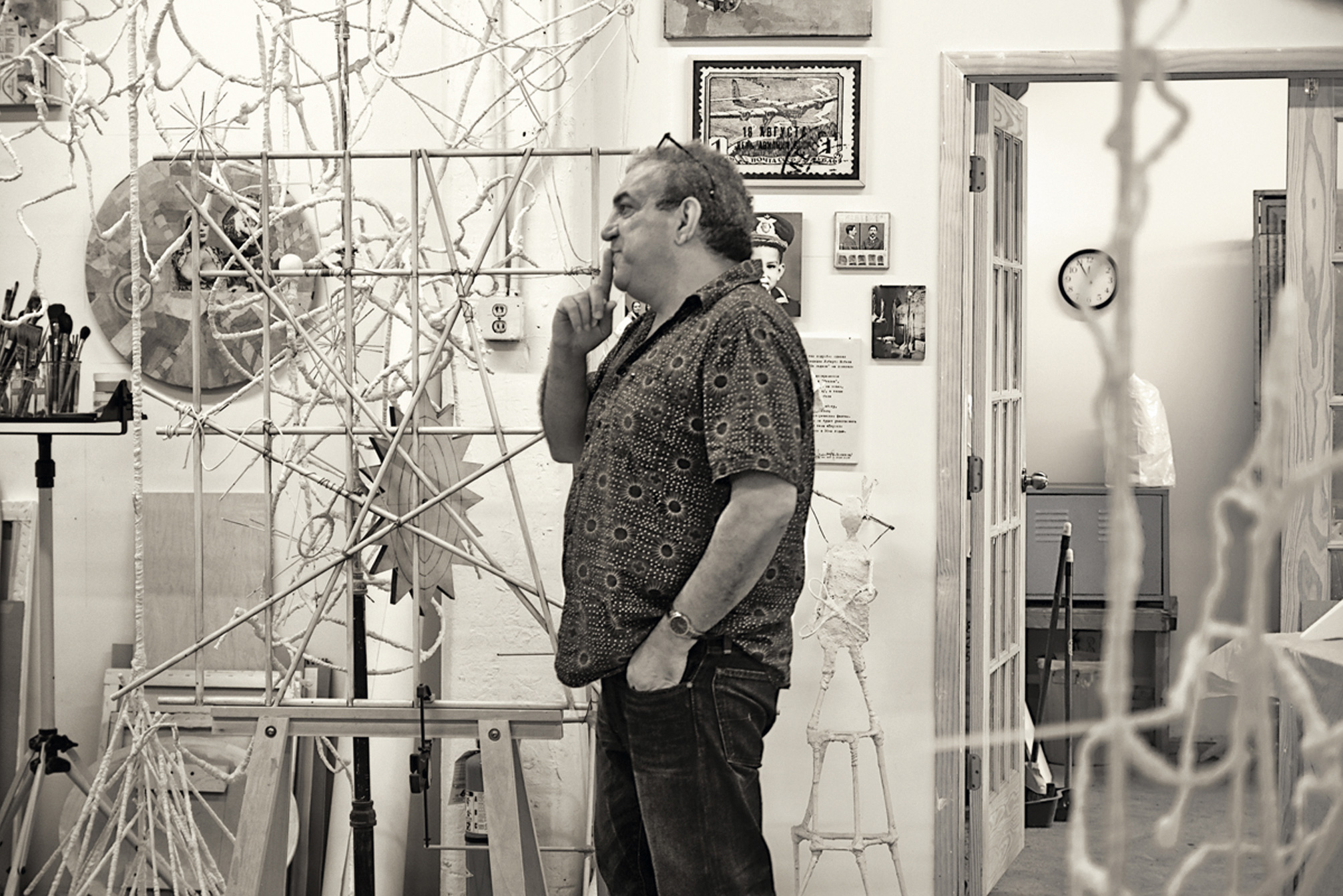
Don't you think that contemporary art is overly attached to commerce? Does such commercialization interfere with the fulfilment of its main mission?
About 280 art fairs a year take place in the world – an average of five per week! As we understand, there are very few truly professional among them. In the new art world, to survive, the gallery must go to four or six fairs every year. This is a colossal work, distracting the attention of dealers from art to the present market. Many good galleries can no longer cope with this, but there is no alternative yet. There are art dealers who successfully work for a certain taste – bad, and they are successful for the simple reason that there is a demand for mediocre art. This is not my personal opinion, but the opinion of professionals in the art world. This has already happened in history, but, as a rule, the human mind corrects the situation after a certain time.
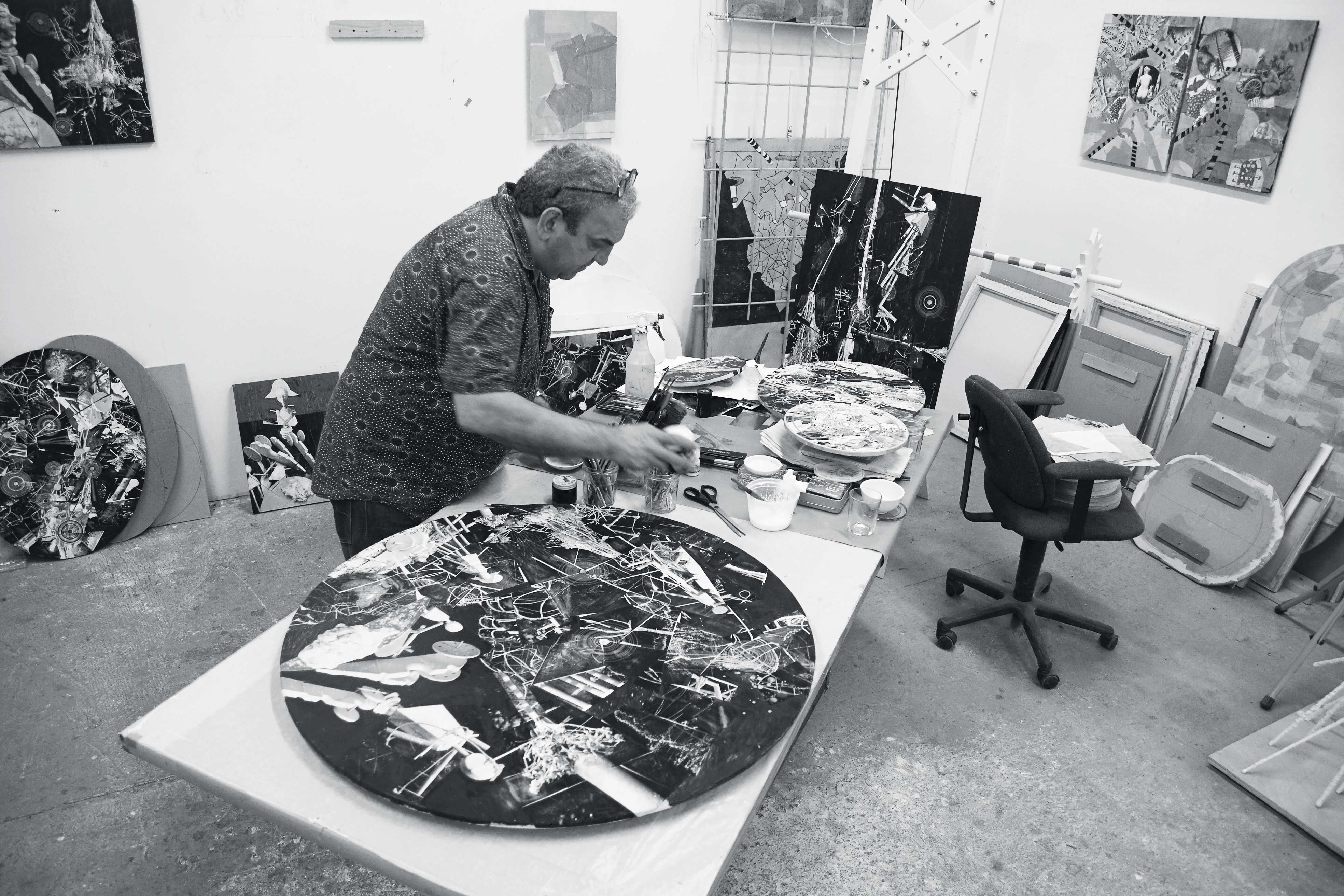
Contemporary art can amaze, even shock, the unprepared. The most unexpected actions suddenly become a performance, and the artist announces a provocative statement as his manifesto. Should art, first of all, carry a certain aesthetic message? Or are you for total freedom of expression, which can take absolutely any form?
I am for complete freedom of expression. It is in these conditions that the emergence of new wonderful art and artists is possible: from the humble, quiet, pastoral Morandi, the miracle colourist and draftsman Henri Matisse to revolutionaries such as Marcel Duchamp, Picasso, Tangley, Maurizio Cattelan, Matthew Barney and others. After all, what Morandi and Alberto Giacometti did seem to most of their contemporaries to be backward. And if it were not for Jean Genet's piercing essay about Giacometti's studio, it is not known whether subsequent generations would appreciate the miracle that he created! Picasso was shy about his early, cubist painting Les Demoiselles d’Avignon (1907). This picture aroused hostility among many lovers of his art and did not like him, he considered it unfinished. The canvas stood for many years in the far corner of the studio until it was bought by an American collector on the advice of D. Kahnweiler, a Parisian dealer. And later, in 1937, the painting was acquired by MoMA for a colossal amount at that time, and today it is the number one exhibit there. But complete freedom of expression makes sense only if there is high culture. In the absence of culture, neither quiet, nor radical art, nor that which is between them, works and is activated. The presence of culture does not mean any restrictions but indicates the presence of education, curiosity, reflection on the world around us, and most importantly - the ability to distinguish good from the bad.
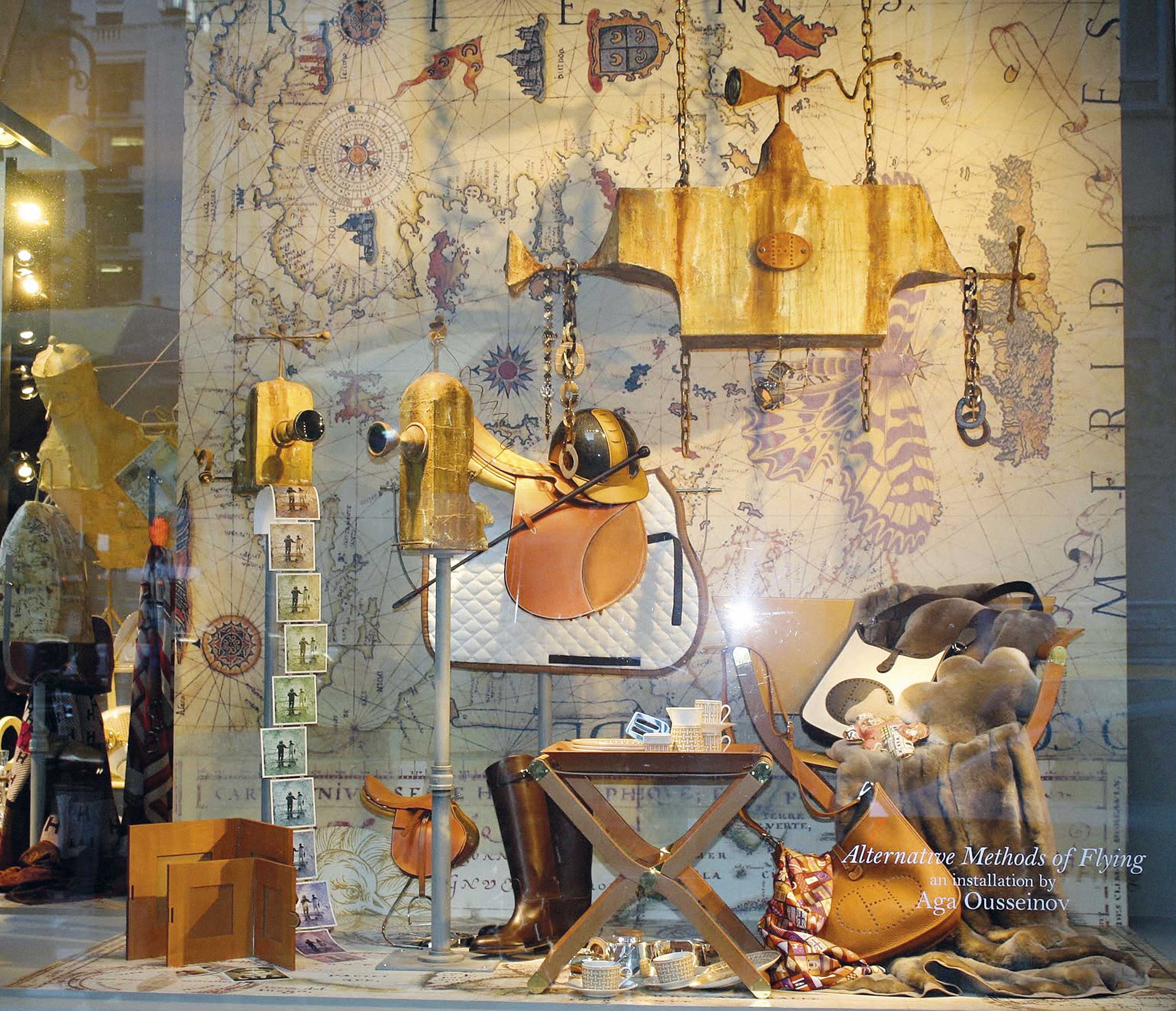
Has there been a fateful meeting with people in your life that dramatically influenced your creativity and beliefs?
Yes, these are Ilya and Emilia Kabakovs, remarkably smart and talented people, I learned a lot from them and am very grateful to them for their many years of friendship. Not Vital, whom I worked as an assistant in the first year of moving to the USA and thanks to which I got into the world of art – in the early 90s it was like entering a tightly clogged concrete door! My teachers: the sculptor Mamed Salakhov at the Baku art school, my favourite teacher in Surikov is art critic Evgenia Vladimirovna Zavadskaya, wonderful photographer Kamal Babaev. Swedish writer Göran Tunström. Marina Marini, the wife of the sculptor M. Marini, whom I met in 2001 in the fund named after her husband, created by her in the Tuscan city of Pistoia, the former abbey of St. Anthony. Signora Marina showed me the holy of holies of the museum – Gypsoteka, several rooms that were closed to visitors at that time, with sketches in plaster and other unrealized projects of the master. This happened during my work on a project in Italy, where, as it seems to me in terms of the amount of information received and inspiration, I graduated from another institute. I am grateful to the wonderful artists Lena Kronkvist, Yasuo Ihara, Ron Gorchov for friendship and long conversations about art... I can’t list all of them, but I, of course, was lucky to meet interesting people.
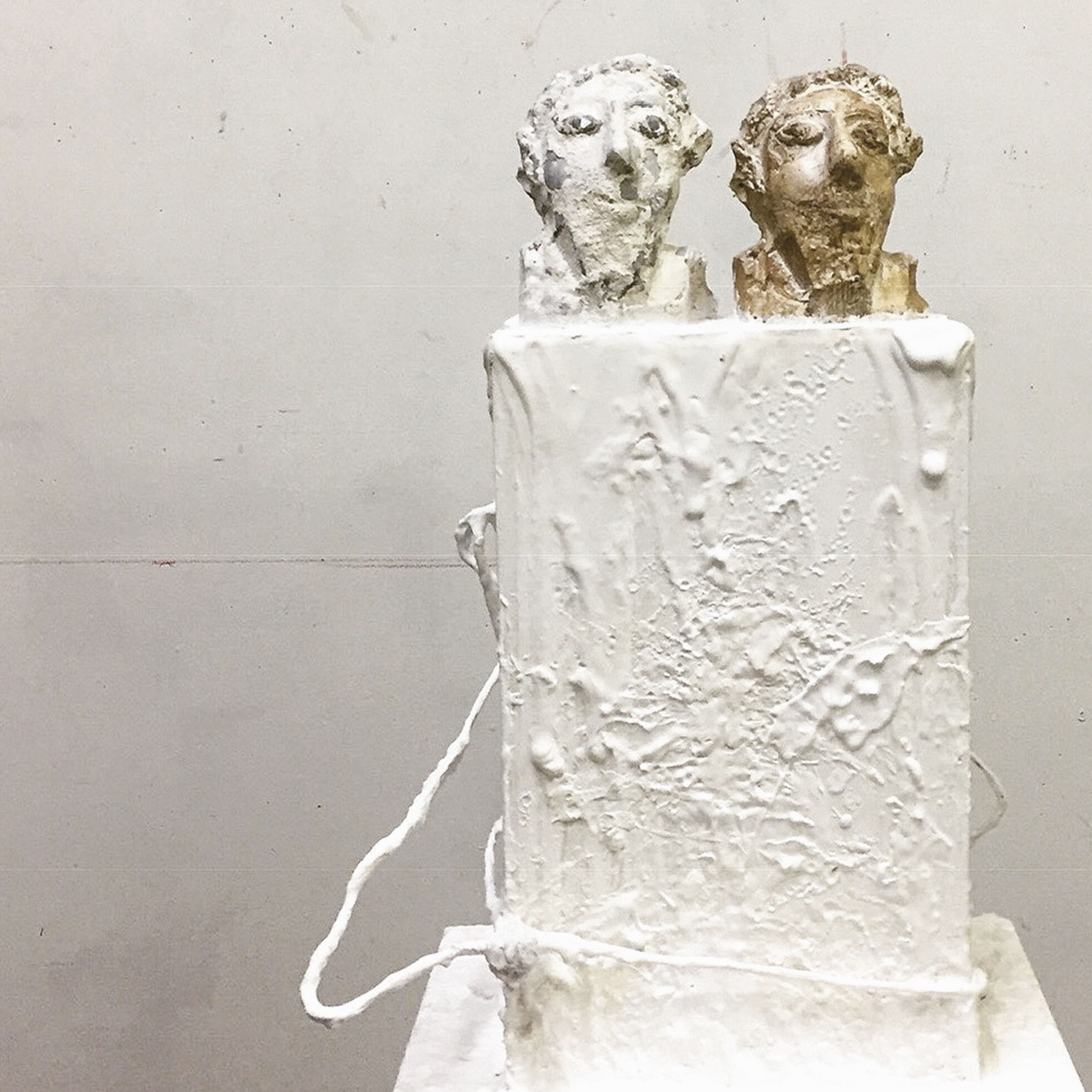
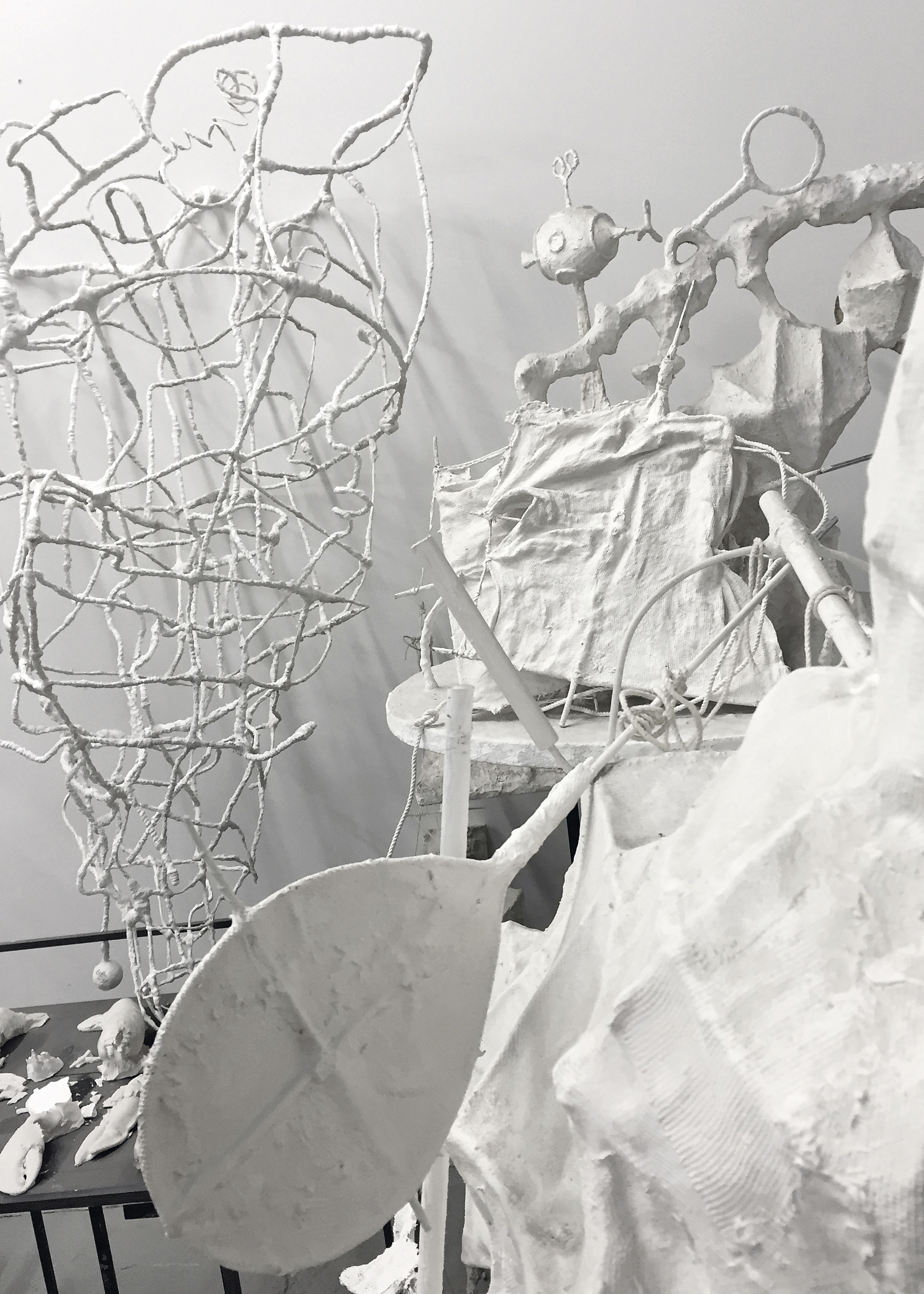
If suddenly any work of art in the world turned out to be available to you, what would it be?
Since there is such a theoretical possibility, I would ask for two things, like children, who are offered to choose any toy in the store. An early painting by De Chirico, painted by him in Ferrara, during his years in the army during the First World War. The art critic Paolo Baldacci called De Chirico's painting The Enigma of the Hour, the first conceptual work in history. And a sketch from the notebook of Federico Fellini for the film "The Bullocks" (1953), which depicts the main characters wandering along the seashore. This is a group of friends, young people from a provincial town, escorting a comrade to Rome, into a new life. I love this film and especially this scene, reminding me of farewell to my friends before leaving for Moscow to study at Surikov: we also wandered along the coast on a damp, rainy day along an empty Baku boulevard, to the drone of ships in the fog. Only we and a large flock of seagulls... Both works are “made” in Italy, and this is explained in the previous answers about another school that I went through six years of work.
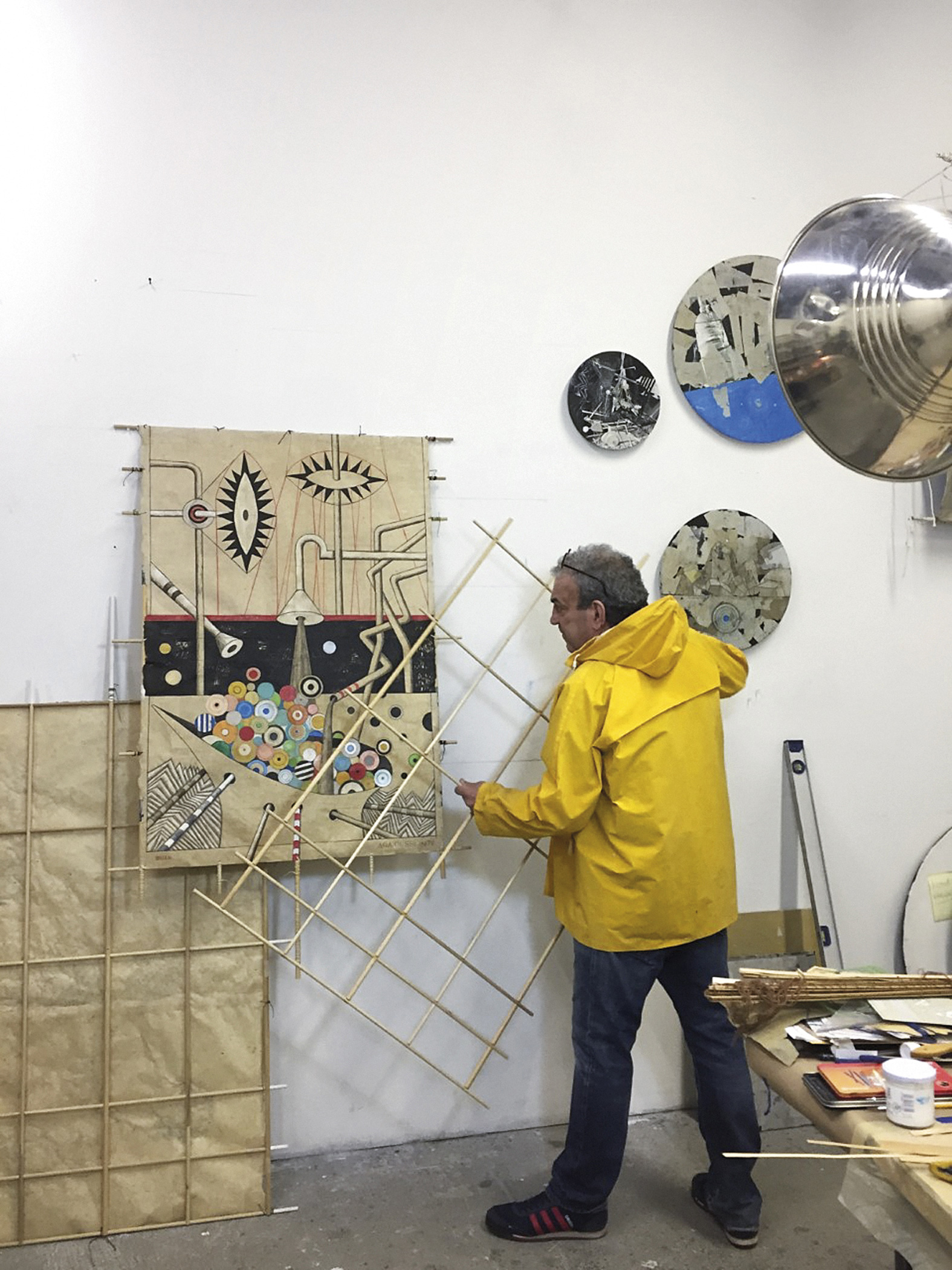
What projects are you working on now?
I can name a few at once: a series of works in the technique of designed photography, under the working title Celestograph, and the Magnificent Mediterranean Tour project, which includes drawings, three-dimensional objects and video; In addition, I continue the project launched in 2010 with the optical technology Stereoscope and Stereotypes and work on photo and sculpture composition dedicated to aviators of the First World War. I’m also preparing a new version of the 2016 Ice Cold War video for display in May in the Light Year / DUMBO project (Manhattan Bridge Video Projections).

When was the last time you were in Baku? What changes in your childhood city have particularly struck you?
I have not been to Baku for six years. Despite all the changes that cannot be avoided in any actively developing city, the spirit of a wonderful European city, a territory at the junction of different cultures, but with its own, unique identity, remained in Baku. I like the reconstructed, elongated boulevard, which has always been my favourite place in the city. And our bay has become prettier over the years! I come from an old Baku family of hereditary shipowners – Huseynovs. The ships of my ancestors were built at the shipyards of Stockholm on the Baltic Sea and through the system of canals and northern lakes, down the Volga down to the Caspian. Here are sea also fascinates me, and the city standing on it is still my favourite place on Earth.
Interview by Nigar Maharramova
Photo: press materials
The material was published in the 64th issue.



